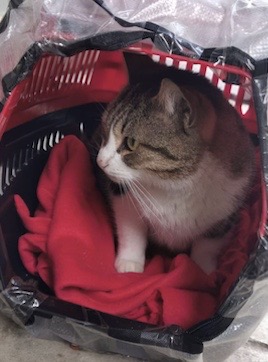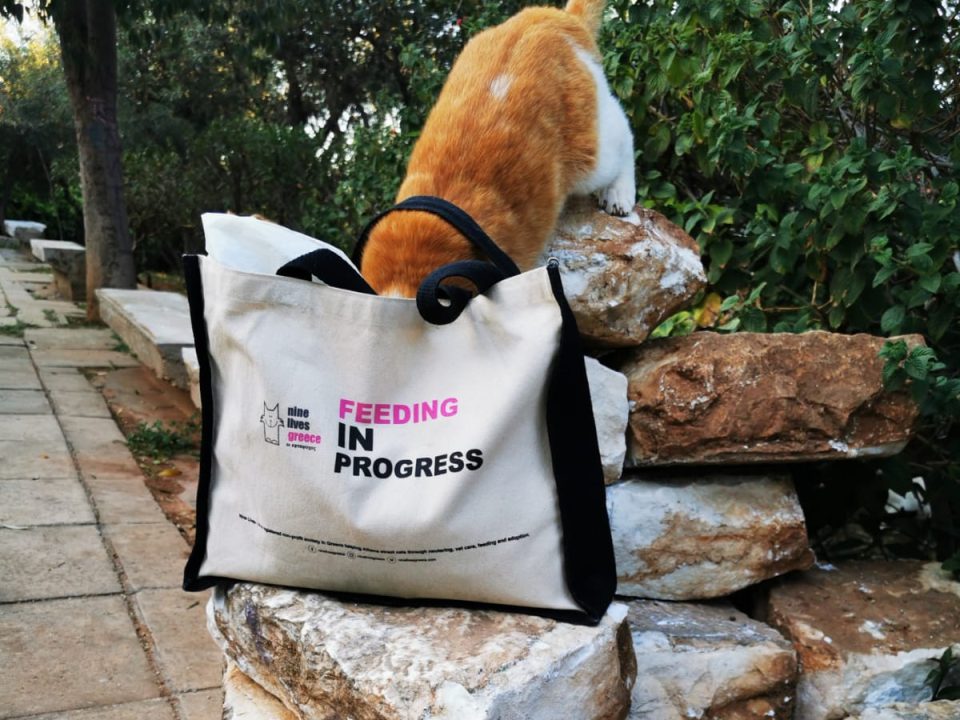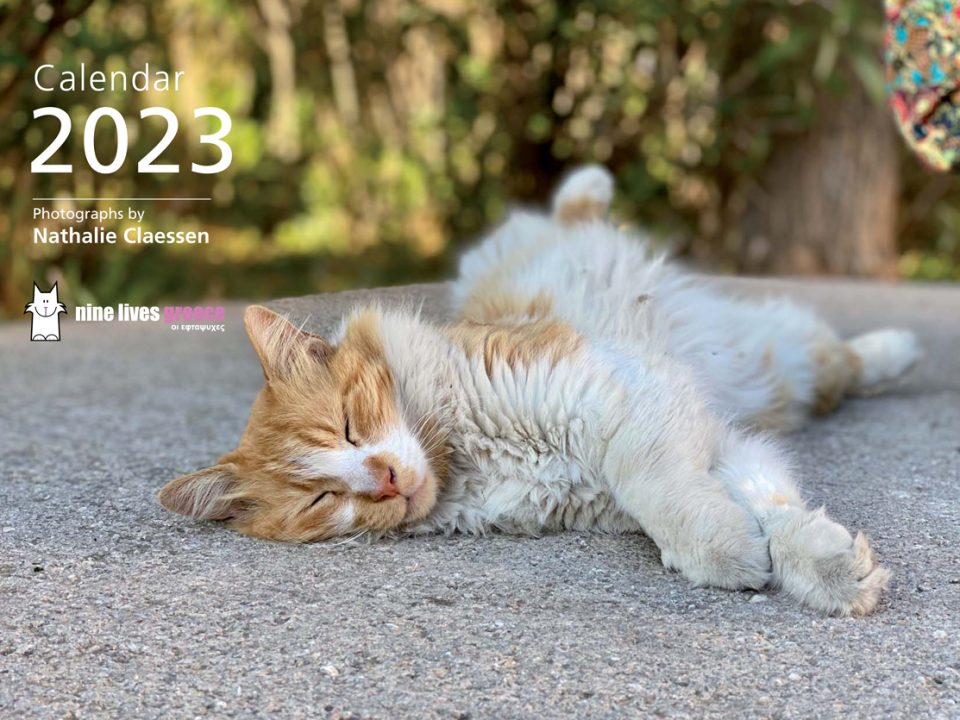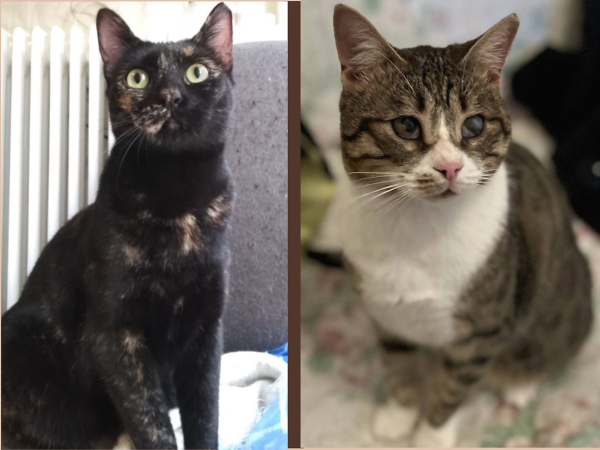
Niaou & Ninji
December 21, 2022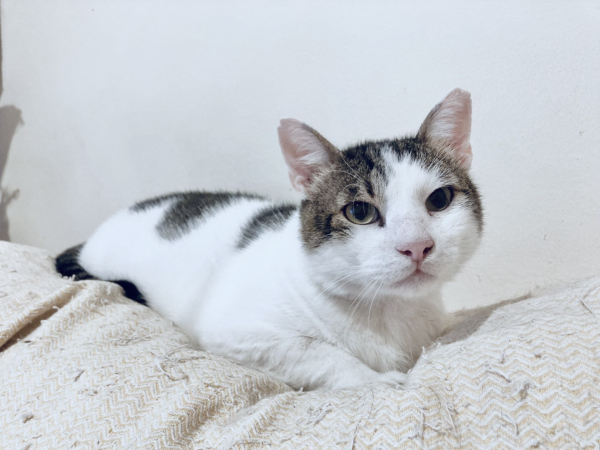
Sandy
February 17, 2023How can we help stray cats now that winter has come? Temperatures are dropping, rain is more frequent and even snow is starting to fall. How does that affect our stray friends? Most people believe that stray cats have all the coping mechanisms needed – especially their fur – to face cold weather and rainy seasons. After all, their home is the ‘great outside’ and having adjusted to it, they know where to find shelter and search for food. Well, this notion is not completely wrong….but unfortunately, a large number of adult stray cats and most of the newborn kittens don’t manage to survive extreme weather circumstances. We can all do something to provide further support, which is definitely needed and will be much welcomed. So what can we do to help our furry friends through winter?
Food and water
Build a feeding station that will shield food and water from the elements and will also stop cats from roaming to find food. If you already do this, increase the food portions you provide if possible. Cats need the extra food to conserve energy. Wet food can be more easily digested, so by offering canned wet food you help them preserve more energy to fight the cold and stay warm. Try to prevent food from freezing or getting wet. Serve food in plastic containers and place them in a protected area. Dry food will not freeze, but it takes more energy to digest. Hence, a combination of both dry and wet food might be the best option. If the temperatures are extremely low, try to heat food and water before placing them outside for the stray kitties. Use deep bowls rather than wide ones and avoid using metal bowls.
Make cat shelters
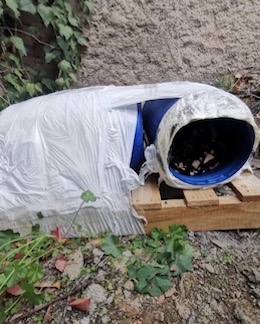
DIY homes made out of plastic barrels and some stretch film placed on a wooden pallet so that they remain dry.
You can either buy premade outdoor cat houses or DIY your own! You can use containers, cat carriers or litter boxes. They don’t need to be elaborate or big, since most cats prefer to have her own little house rather than share it with the other residents of the colony. Try to wrap the house with plastic packaging film or other material to secure it and prevent it from getting wet, but also to insulate it from cold. Place it on a higher level such as a wooden plank to protect it from dampness. Put a door flap to keep the cold air out and a second smaller entrance to help cats escape potential predators. The doorway should be only big enough for cats and the overall size of the shelter should allow 1-3 cats to get in. Smaller shelters take less body heat to warm up.
Place old clothes, blankets and various warm pieces of fabric to make the shelters cozy and warm. Self-heating pads are also very helpful. That way they will even be more appealing to cats. Check the shelters regularly. Make sure they are in good condition, dry and also ensure that cats are not trapped, snowed in or sick and simply lying there unable to ask for help. In case the cat residents of your colonies get along and you are sure they would like to share larger homes, you can design bigger shelters with pieces of wood or other material. Make sure they are steady and follow the above tips as well.
Measures of precaution
Check your car before you start driving. Knock on the hood gently, check the area under and around your car and try to listen carefully in case you hear a cat’s meow. It is extremely common for many animals, but especially for cats, to get underneath or inside a car to warm up. Do not use antifreeze, salt or other chemicals in areas accessible to cats, since these substances can be harmful or even lethal if licked off of paws or fur.
TNR in winter
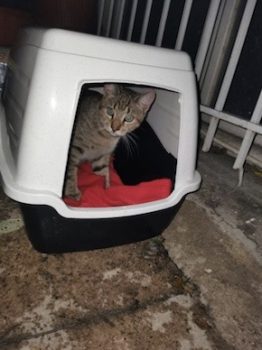
Cat shelter made of a closed litter box. A fleece blanket is also placed inside.
We’ve mentioned the importance of TNR (trap-neuter-return), and we’ll keep shouting “TNR as much as you can!”. But when it comes to cold weather, rain and snowfalls, use your best judgement. If you feel uncomfortable outside, it’s certain that cats will too. Don’t forget that in order to spay or neuter, vets will have to shave a part of the cat’s body; hence, this spot will feel exposed and cold. The immune system of a cat having received surgery will be weaker during the recovery process, so it will be even harder to recover if they have to cope with cold too.
The best possible option to maintain some balance and not stop your TNR operations during the winter will be to either arrange with your vets to keep your cats longer in the clinic or find them a foster home for a short period of time until they recover. Be careful! Never leave your traps unattended. While this applies to all cases, it is especially important to remember that it will be harder for a cat to warm up if confined in a trap in the winter.
So now you should be ready to help your stray furry friends stay warm and feel cosy throughout the winter season. And trusts us, if you do all the above, your heart will warm up too!


